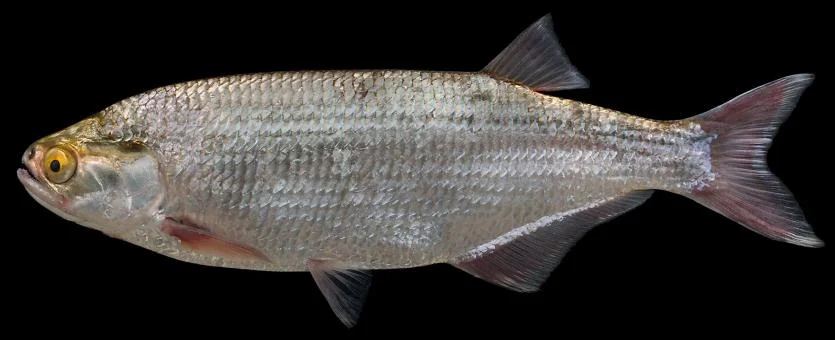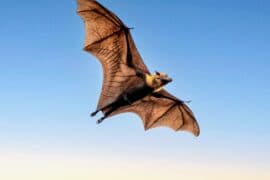Goldeye
(Hiodon alosoides)

Description
The goldeye (Hiodon alosoides) is a freshwater fish found in Canada and the northern United States. It is one of only two extant species in the family Hiodontidae, the other species being Hiodon tergisus. The species name alosoides means shad-like. It is also called Winnipeg goldeye, western goldeye, yellow herring, toothed herring, shad mooneye, la Queche, weepicheesis, or laquaiche aux yeux d’or in French. Goldeyes are recognizable by their silver compressed body form and their large gold eyes. Their body appears to be a blue-green silver from above and a more white silver from below. They have two abdominal and pelvic fins as well as a dorsal on their back and an anal fin on their underside. The dorsal fin is positioned opposite or behind the origin of the anal fin. Goldeyes also have a fleshy keel that extends from the pectoral fins to the base of the anal fin. Their mouth is large and in the terminal position with a blunt round snout. The Goldeye fish has cycloid scales that lack spines. They also have a sensory system known as the lateral line system. Adults are usually about 15-17 inches (380-430 mm) but can reach 20 inches (510 mm). Goldeyes typically weigh only 1-2 pounds (0.45-0.91 kg). The age of first reproduction for goldeyes is 7-10 years for females and 6-9 years for males. They spawn in late May or early June. The eggs that they lay are about 4 millimetres (0.16 in) in size and they are semi-buoyant. This is a rare trait in fresh water fish, but is more common in marine fish. The eggs are suspended in the water and they drift downstream or to quiet waters. The majority of growth that occurs between June and September. Goldeyes occur from as far down the Mackenzie River as Aklavik in the north to Mississippi in the south, and from Alberta in the west to Ohio south of the Great Lakes, with an isolated population south of James Bay. It prefers turbid slower-moving waters of lakes and rivers. Goldeyes feed on insects, crustaceans, fish, frogs. The fish averages less than 1 lb (450 g) or 12 in (30 cm) in length, but can be found up to 2 lb (910 g) or 16 in (41 cm) in some lakes. It has been reported up to 52 cm (20 in) in length. The goldeye is considered a good fly-fishing fish, but not popular with most anglers because of its small size. It is one of 122 new species of animals, birds, fish documented by the Lewis & Clark Corps of Discovery.
Taxonomic tree:







